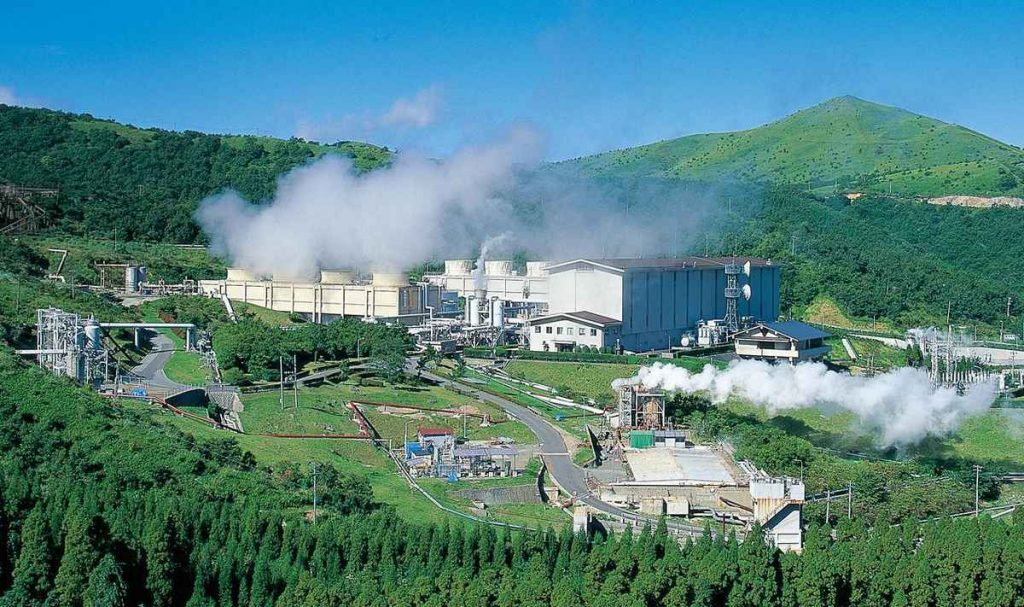このページを 日本語 で読む
Japan is known for its abundant volcanoes and earthquake fault lines.
Conversely, these are treasured asset, as the country is believed to possess the world’s third-largest geothermal resources. Supercritical geothermal power generation harnesses this environmental asset, drawing high-temperature, high-pressure water from deep underground to produce large amounts of electricity.
Led by the New Energy and Industrial Technology Development Organization (NEDO), efforts are progressing to put this technology into practical use. As geothermal power generation emits virtually no carbon dioxide, it stands out as a renewable energy source aligned with the government's 2050 carbon neutrality goal.
Future developments, including Japan’s potential to fully tap into this valuable domestic energy source, are drawing significant attention.
A Supercritical Boost
In simple terms, geothermal power generation creates electricity by using steam from hot water extracted from deep underground to turn turbines. The residual hot water is then returned underground.
Currently, about 20 geothermal power plants in Japan, mainly in the Tohoku and Kyushu regions, generate over 1,000 kilowatts each. These conventional plants draw hot water at temperatures between 200 to 300 degrees Celsius from depths of one to three kilometers.
Supercritical geothermal power generation, by contrast, pumps up hot water at temperatures around 400 to 500 degrees Celsius, from depths of four to five kilometers, close to magma reservoirs.
At standard atmospheric pressure (one atmosphere), water boils at 100 degrees Celsius. However, as pressure on water increases, so does its boiling point. At 218 atmospheres, the boiling point reaches 374 degrees Celsius. Beyond this point, water enters a “supercritical” state, where it no longer has distinct liquid and gas phases. “Supercritical geothermal power generation” refers to harnessing energy from this supercritical water.
The steam produced from supercritical water is hotter and at higher pressure than that in conventional geothermal systems, resulting in several times more power per unit. NEDO estimates that a supercritical geothermal unit could generate around 100,000 kilowatts.
In 2021, the Ministry of Economy, Trade, and Industry formulated its "Green Growth Strategy to Achieve Carbon Neutrality by 2050." The strategy designates geothermal power as a key growth area alongside offshore wind and solar energy. The strategy projects that supercritical geothermal power could establish a domestic market exceeding ¥1 trillion.
Untapped Kilowatts
According to the Agency for Natural Resources and Energy, Japan’s geothermal resources for conventional power generation alone amount to 23.47 million kilowatts. This ranks Japan third globally, after the United States and Indonesia.
However, the combined capacity of Japan’s geothermal power plants is just over 500,000 kilowatts. The gap indicates that this valuable domestic resource remains largely untapped.
Supercritical geothermal power generation is anticipated to become the next-generation technology for geothermal energy. However, the crucial supercritical water needed for this technology has not yet been located in Japan.
NEDO aims to confirm its presence by 2030 through upcoming surveys. Accordingly, they have identified four candidate sites: Hachimantai and Kakkonda in Iwate Prefecture, Yuzawa Nanbu in Akita Prefecture, and Kokonoe in Oita Prefecture.
All four regions currently host conventional geothermal power facilities. In the future, trial drilling and other work will help identify areas best suited for full-scale drilling.
Challenges Include Heat, Corrosion, Clogging
NEDO aims to commercialize supercritical geothermal power by around 2050. However, technical challenges remain. Facilities capable of managing hot water drawn from just above magma reservoirs over extended periods will be crucial.
NEDO is currently assessing candidate alloys for use in these facilities. These alloys will then need to be tested by direct exposure to supercritical water to verify their durability and suitability.
Supercritical water is also anticipated to have high acidity and substantial silica content. The high acidity can accelerate metal corrosion, while elevated silica levels increase the risk of clogging pipelines.
Iceland, a volcanic country in Northern Europe, leads globally in the research and development of supercritical geothermal power. Between 2016 and 2017, Iceland drilled to a depth of 4,650 meters. However, it has not yet been able to fully harness steam from supercritical water.
Even with these challenges in mind, Yosuke Kondo, head of NEDO’s Heat Utilization and Geothermal Power Generation Unit within the Renewable Energy Department, expressed his resolve: “Supercritical geothermal power is a domestic energy source, and we aim to move steadily toward commercialization.”
RELATED:
- Carbon Neutrality and Branding: Why Companies Are Eager to Get Involved
- Pioneering Green Hydrogen System Launched to Push Decarbonization
- Ken Noguchi: Get Those Geothermal Energy Plants Up and Running
(Read the original article in Japanese.)
Author: Shinji Ono, The Sankei Shimbun
このページを 日本語 で読む
